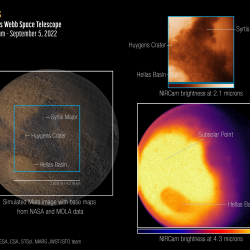On Monday September 21, 2020, the prestigious Nature Geoscience journal published an article from BIRA-IASB, presenting the first satellite detection of nitrous acid (HONO) using the TROPOMI satellite instrument. This work is the result of a fruitful collaboration between two BIRA-IASB teams, the UV-Visible observation group and the tropospheric modeling group, and the group of R. Volkamer at the University of Colorado Boulder. The publication (Theys et al., 2020) presents the first unambiguous detection of HONO from TROPOMI and consistently reveals the existence of enhanced HONO over wildfires (see example in Fig. 1) for major ecosystems.

The importance of HONO in atmospheric chemistry stems from its role as precursor of the OH radical. The latter is among the most important oxidizing molecules and controls the degradation of pollutants and greenhouse gases, and contributes to ozone formation and photochemical smog. As such, accurate determination of HONO sources are highly relevant to the modeling of climate and air quality. Because the release of HONO by fires is poorly understood, current models usually neglect HONO from those sources.
In collaboration with the Volkamer group of the University of Colorado Boulder, we validated the TROPOMI measurements with aircraft data obtained during the Biomass Burning Fluxes of Trace Gases and Aerosol (BB-FLUX) field campaign. A qualitative comparison is shown in Fig. 2 which corroborates the detection of HONO in fire plumes.
Our study demonstrates that pyrogenic HONO emission assessments have been underestimated by a factor of 2-4 for all ecosystem types (savannas, tropical and extra-tropical forests). Supported by model simulations from the BIRA-IASB tropospheric modeling group, we estimate that HONO emissions account for about two-thirds of OH production in fresh wildfire plumes and can have a significant impact on atmospheric composition at regional level.
The findings from this study are ground for further research. The full implications of the enhanced HONO sources from fire events on climate and air quality need to be assessed. Furthermore, the exact formation of HONO in the fires is still not understood.
Acknowledgements
This work has been performed in the frame of the TROPOMI and the BB-FLUX projects. We acknowledge financial support from ESA S5P MPC (4000117151/16/I-LG), Belgium Prodex TRACE-S5P (PEA 4000105598) projects. The BB-FLUX project is supported by the US National Science Foundation award AGS-1754019.
Online article
https://www.nature.com/articles/s41561-020-0637-7
Please cite this article as:
Theys, N., R. Volkamer, J.-F. Müller, K. J. Zarzana, N. Kille, L. Clarisse, I. De Smedt, C. Lerot, H. Finkenzeller, F. Hendrick, T. K. Koenig, C. F. Lee, C. Knote, H. Yu, and M. Van Roozendael: Global nitrous acid emissions and regional oxidants levels enhanced by wildfires, Nat. Geosci., (2020).
Contact
- N. Theys, UV-Visible research group - theys (at) aeronomie (dot) be
Source: PxHere




